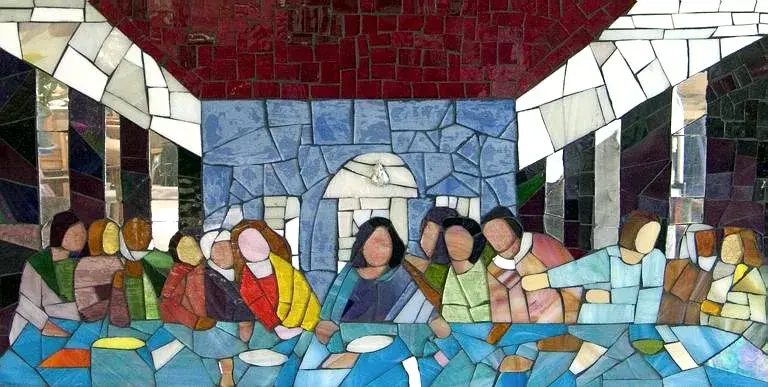All About Good Friday
- Rev. Caroline Kramer
- Mar 27, 2024
- 3 min read
The Friday before Easter is called Good Friday. It might seem strange remembering someone dying on a day and then calling it Good. It sounds like we are saying it was a good thing that Jesus died. It wasn’t. It was a terrible thing. God in God’s goodness, somehow, in a wya we cannot fully understand, brought life out of that death. Brought peace out of that violence.
In the Book of Common Prayer the Liturgy is fairly simple in some ways but parts of it might need a little bit of explanation.
There are readings, of course. We always have the whole of the St. John Passion. This is a slightly different way of telling the story to the other three Gospels and so it is read each year. The passion narratives from the other three (synoptic) Gospels are read in turn over three years on Palm Sunday.
There are some longish prayers in there which we only use on this day. The pace of this liturgy is designed to be slower and more deliberate. It is not supposed to be morose, neither is it meant to force us into unnatural emotions, or set out to make us feel bad. It is paced to give space
There is an option to bring in a cross, which we do. Words are sung or said at three points as it comes in. We make these mirror the points where the Easter Candle will stop on its journey into Church in a couple of days at hte Vigil Service.
“This is the wood of the cross, on which hung the saviour of the world”
“Come let us worship”
The service does not set out to tell people exactly how God did what God did. There are images in readings and prayers. In hymns and in sacrament. They are for people to experience and enter into this journey.
We don’t celebrate the Eucharist on Good Friday. Instead, we have saved consecrated bread from the night before. This has been the center of the Watch of the Passion (see the Maundy Thursday Blog). Not everyone wants communion on Good Friday because that is not their tradition. As with many Holy Week rituals they are there for those who want them and are not forced on those who don’t .
The Good Friday Liturgy is written to end at noon. All consecrated bread and wine are finished up and the Aumbry ( the place we always keep extra consecrated bread and wine) is left open and empty. It is a stark image.
Some Churches, including ours, offer the Stations of the Cross at noon. This is a walk with Jesus to the cross around 14 points. The pictures are up permanently in Church and there are special readings and prayers with each one. The congregation, if they are able, literally move around the Church from picture to picture.
In many places the Liturgy of the Day is used in the evening. This is understandable for those who work but it is also a shame because we lose that long afternoon and evening of silence in the Church. The sense of loss is not soo obvious when you leave Church on Friday night and then many will be coming back on Saturday to decorate. The silence does not have a chance to settle in quite the same way.
Whether you get to Church or not, the afternoon and evening or Good Friday and the whole of Saturday are days of grief and emptiness. You will, likely, be busy with other things but pause, for a moment here and there, to ponder and empty cross and Jesus dead and in the tomb. This time of desolation might seem depressing but it can be prfoundly comforting as it speaks to something deep within us. That silence allows the trauma of loss and the agony which we sometimes find ourselves in the midst of. That silence speaks to all of the things we feel helpless in the face of.
Easter will come soon enough. Some time after 6pm the Great Vigils will begin. The story of the people of God will be told and fires and candles will be lit. The chant at three places in the Church will be “The Light of Christ”.
But allow that silence first. Understand that emptiness which longs to be filled. Allow the questions which cannot be answered.






Commentaires